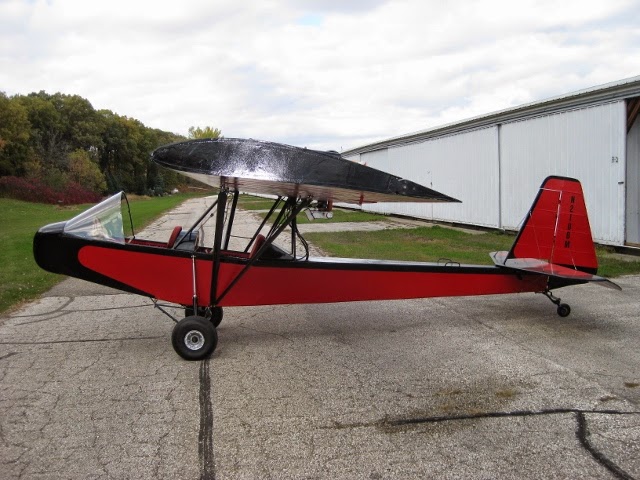... it shouldn't make any difference whether the mass up front is made mostly of metal or flesh and bone (Alex) as long as the airplane is within weight and CG limits. However, and for whatever reason, I get the feeling Woody doesn't like crosswinds.
True, there is a lot of sail area with the high fuel tank and also true, there is a decided difference when the thrust line is way up high instead of along the localizer and glideslope of the fuselage, all of which contribute their bit to the generally squirrelly crosswind characteristics during takeoff and landing. A third factor (and probably the most prominent one) is that I sit in front of the mains so I feel the swings and sways a lot more. I sat in front of the mains in the jet, but it was a tricycle gear airplane. A more appropriate comparison would be an airplane with a tailwheel, like a B-17 or a C-46/47.
Swings and sways aside, I was having trouble achieving liftoff at what I thought should be a reasonable airspeed so I decided to increase the main tire size from 6.00x6 to 8.50x6 in order to get a little more three-point angle of attack.
The new tires are great and jacking the mains up 2-1/2 inches helps a lot with the three-point AOA ... that's the good news. So far, there's no bad news to go with it. The airplane has to fly off three-point, or nearly three-point - there's no such thing as a "rotation". If you try, you'll drag the tailwheel and increase the takeoff roll. (I remember an after-action story from the memory bank about this.) Landings are the same; every landing has to be nearly a wheel landing or the tailwheel makes first contact.
The new tires lowered liftoff and touchdown speed by almost 8 mph. That's a lot but still not near where I'd like them to be. I could try vortex generators along the leading edge but a given airfoil can only do so much and I believe I've done all I can short of a major tweak to the angle of incidence of the wing - maybe I could hand crank an adjustable wing angle of incidence a la F-8 Crusader.
Slats, flaps, hook and an adjustable wing AOI ... THAT would get some attention at $100 hamburger events. Wes, if you're up there reading along, I'd sure like to have you back with us so you could chime in on this.
The new tires are great and jacking the mains up 2-1/2 inches helps a lot with the three-point AOA ... that's the good news. So far, there's no bad news to go with it. The airplane has to fly off three-point, or nearly three-point - there's no such thing as a "rotation". If you try, you'll drag the tailwheel and increase the takeoff roll. (I remember an after-action story from the memory bank about this.) Landings are the same; every landing has to be nearly a wheel landing or the tailwheel makes first contact.
The new tires lowered liftoff and touchdown speed by almost 8 mph. That's a lot but still not near where I'd like them to be. I could try vortex generators along the leading edge but a given airfoil can only do so much and I believe I've done all I can short of a major tweak to the angle of incidence of the wing - maybe I could hand crank an adjustable wing angle of incidence a la F-8 Crusader.
Slats, flaps, hook and an adjustable wing AOI ... THAT would get some attention at $100 hamburger events. Wes, if you're up there reading along, I'd sure like to have you back with us so you could chime in on this.
John drove with a trailer full of goodies to Woodruff SC this month for a few days of model airplane flying - I happened to be not far away and would have met him there for breakfast on my way back home, but I decided to get a very early start and I know how John feels about being rousted out of the sack. That event is held at Triple Tree, a private airport that belongs to a fellow named Pat Hartness. The runway is like a pool table and landscaping more like a very nice golf course, albeit one with a restored WWII control tower and a private collection of beautiful vintage airplanes.
Pat holds a full-scale fly in every September, which I would very much like to attend with the CallAir this year if it's ready.
While the CallAir is under the knife, I'm having a ball with Woody and he's becoming pretty well known around the local fly-in circuit.
Fly safe ...
While the CallAir is under the knife, I'm having a ball with Woody and he's becoming pretty well known around the local fly-in circuit.
Fly safe ...










































